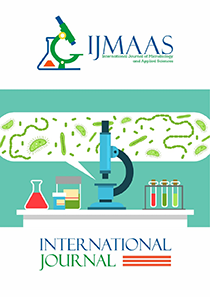Impact of Some Stimulants on Heavy Metals and Molecular Identification of Microorganisms in the Bioremediation of Crude oil Contaminated Soil
Vol 3, Issue 1, 2024
KEYWORDS
Crude oil, soil, inorganic fertilizers, bioremediation, petroleum hydrocarbon, DNA sequencing, heavy metals
Abstract
This study was aimed at identifying the microorganisms involved in the remediation of hydrocarbon contaminated soil and the impact of some stimulants on some metals. Unpolluted soil was obtained from Rivers State University farm was contaminated with crude oil amended with various concentrations of stimulants. Setups of (20g and 40g) of NPK, Rhamnolipids and cow dung were used to supplement 1kg each of the contaminated soil while, another 1kg of the contaminated soil without amendment was used as control sample. The experimental setups were monitored on days 1, 56 and 70 for the concentrations of heavy metals. Standard microbiological procedures were used for the isolation and identification of organisms. The microorganisms were identified by conventional biochemical and molecular methods. The organisms identified includes Serratia fonticola AJ233429, Enterobacter bugandesis LR861527, Alcaligenes faecalis MT421929.1, Pseudomonas fluorescens CP03848.1., Geotrichum Candidium OP153873.1, Candida viswanathii NG0634191, Penicillium griseofulvum KJ881374.1, Aspergillus niger MF078659.1 were identified by 16S rRNA gene sequence. The percentage bioremediation of the heavy metals showed the highest reduction in concentrations in the contaminated soil stimulated with 40g NPK> 20gNPK> 40ml RM >40g CD >20ml RM>20g CD > Control sample for iron, chromium and Lead as shown in this study. The microorganisms isolated during the remediation study may be utilized for remediation of heavy metal contaminated soil; furthermore, NPK was observed as a better stimulant in the microbial degradation of heavy metals hence could be used in effective decrease in metals contaminated soil.
Current: Vol. 4, Issue 1, 2025

Call for papers
The International Journal of Microbiology and Applied Sciences warmly welcome your valuable articles for publication.
